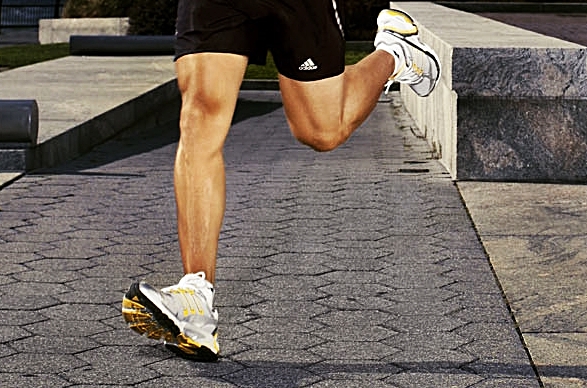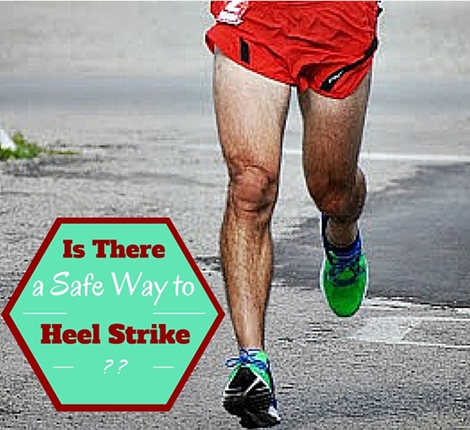Bad news for heel strike runners: no matter how much they tweak their heel strike running style to avoid injury, they still generate more impact than forefoot runners.
Is There a Safe Way to Heel Strike?
To reduce impact, loading and injury, most heel strike runners switch to forefoot running, simply because forefoot running has more impact-filtering properties.
However, a study by Schmitz et al. assessed whether modifying certain biomechanical aspects, other than heel strike, would enable heel strike runners to run more safely, with less impact and hopefully, less injury.
The researchers asked heel strike runners to adjust their hip kinematics during running. From there, the researchers determined the effects of hip muscle activity modulation on the biomechanical variables related to loading and the impact transient at heel strike.
The researchers found that heel strike runners who had a higher positioned thigh during swing and a higher positioned foot during mid-swing had reduced landing velocity of the foot, which reduced impact and loading at heel strike. So, in this case, adopting a higher back-kick reduces landing impact at heel strike. However, adopting a forefoot strike reduces impact even more.

The researchers concluded that impact reduction at heel strike is possible through greater hip flexor activity and therefore, less hip extensor activity. The downfall of this approach is that it reduced peak impact by 35%, whereas switching to forefoot running reduces impact peaks by 67% (Lieberman et al. 2010).
- Forefoot running is most implicated in suppressing impact peaks, partly because forefoot runners slide into stance via ankle plantar flexion and knee flexion, whereas heel strike runners ‘dig’ their heels into the ground via ankle dorsiflexion and maximum knee extension, resulting in a greater vertical collision force.
The Take Home Message
Even though modulating hip flexor muscle activity can have beneficial effects on impact reduction in heel strike runners, the researchers findings support the belief that the heel strike landing itself, is at the root of the impact peaks.
More From Run Forefoot:
Patellofemoral Pain Syndrome – Many runners suffer this dreaded injury, but many runners don’t know why. This article covers the main cause of knee injury in runners.
Achilles Heel – Found out why heel strike running is such a daunting task for the Achilles tendon, resulting in injury to the tendon.
Eccentric Exercises – We often hear about eccentric exercises, but you can achieve them just by running barefoot; find out how.
Forefoot Shoe Review – Read my review on the FeelMax Osma 2, an under-appreciated forefoot running shoes that is a great tool to help you mechanically run your best.
Most Rated Minimalist Shoes for Forefoot Running:
Women’s Vibram Five Fingers Bikila EVO
Women’s Vibram Five Fingers Trek Ascent LR
References:
Lieberman, D.E., Venkadesan, M., Werbel, W.A., Daoud, A.I., D’Andrea, S., Davis, I.S., Mang’Eni, R.O., Pitsiladis, Y., 2010. Foot strike patterns and collision forces in habitually barefoot versus shod runners. Nature 463, 531–535.
Schmitz et al. Variables during swing associated with decreased impact peak and loading rate in running. J Biomech, 2014; 47, 31-38.
Bretta Riches
BSc Neurobiology; MSc Biomechanics candidate, ultra minimalist runner & founder of RunForefoot. I was a heel striker, always injured. I was inspired by the great Tirunesh Dibaba to try forefoot running. Now, I'm injury free. This is why I launched Run Forefoot, to advocate the health & performance benefits of forefoot running and to raise awareness on the dangers of heel striking, because the world needs to know.
Latest posts by Bretta Riches (see all)
- Can You Run In Barefoot Shoes? Yes, But DON’T Heel Strike! - 21/07/2024
- Why Cushioned Running Shoes Are Really Bad for Your Feet - 19/07/2024
- Do Cushioned Running Shoes Cause Injuries? - 17/07/2024


Leave a Reply